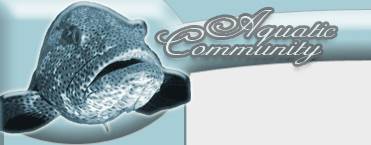Australian Animals
This section of AC Wildlife includes animals from both the Oceania and Australasia ecozones. The Oceania ecozone includes all of Micronesia, Fiji, and all of Polynesia except New Zealand. Australia, New Zealand, New Guinea and nearby islands, the Solomon Islands, Vanuatu, and New Caledonia constitute the separate Australasia ecozone.
Australia is home to a high degree of endemic animals; over 80 percent of the mammals and 90 percent of the fish can be found nowhere else in the world. The amount of native placental mammals is surprisingly low and ecological niches that would normally be occupied by placental mammals on other continents are instead filled by marsupials, a type of mammal that raises its offspring inside a pouch. Examples of famous Australian animals with pouches are kangaroos, wallabies, koalas and wombats. Australia is also home to two of the five living species of monotreme animals, i.e. mammals that lay eggs instead of giving birth to young. The two monotremes you can encounter in Australia are the Platypus and the short-beaked Echidna. The Australian fauna has been heavily affected by two waves of human immigration, the first one occurring over 40,000 years ago and the second one starting in the 18th century. A lot of Australian animals have become extinct or is on the brink of extinction, including numerous endemic species. Today, wide-ranging federal and state legislation aims to protect the remaining Australian animals and several protected areas has been established.
New Zeeland is another part of the world where the relative isolation has led to the development of a high degree of endemic animal species, including four species of kiwi, the kakapo, the takahē, and the flightless moa. The moa is now extinct and the other birds are endangered. A lot of efforts are currently put into protecting the remaining species, including the rare flightless kiwi which has become a national icon. Offshore islands have been cleared of invasive mammals and native species have been reintroduced. There are no native species of snakes living on New Zeeland and only one species of venomous spider, the katipo, which is uncommon and found only in costal areas. New Zeeland is also home to the heaviest insect in the world, a creature belonging to the weta genus capable of reaching the size of a house mouse.
New Guinea and its surrounding waters are inhabited by over 4,500 vertebrate species, including roughly 10 percent of the world's known fish species. The New Guinea animal collection also includes roughly 320 endemic bird species, including the flightless cassowaries. The Southern Cassowary (Casuarius casuarius) and the Northern Cassowary (Casuarius unappendiculatus) can both reach a height of 1.8 metres (6 ft) and are capable of killing humans by using their powerful legs to defend themselves with a dagger-like claw found on the inner toe.
Comprised of hundreds of small islands, Micronesia is chiefly home to animals capable of travelling by air or sea. You can for instance find the Micronesian Kingfisher (Todiramphus cinnamominus) on the islands Guam, Pohnpei and Palau. The subspecies living on Palau was extinct in the wild due to the introduction of the brown tree snake, but is now being bred in captivity. A federal Guam National Wildlife Refuge in northern Guam protects other animal species in need of shelter, such as the Mariana fruit bats and sea turtles.
Out of roughly 322 Fijian islands, no more than 106 are inhabited. Nearly 20,000 hectares are mangrove forest which has given rise to a diverse bird and sea life. You can find over 100 bird species in Fiji, including musk parrots, fantails and honeyeaters. Several small islands are today Nature Reserves for birds, especially besting boobies.
Polynesia consists of over 1000 islands scattered over a vast area and different island have their own particular fauna. In French Polynesia endemic snails have always played an important but often overlooked role in the local ecosystem but in the 1980s and 1990s a mass extinction took place due to the introduction of the carnivorous snail Euglandina rosea. A Survival Plan for the endemic snails is now in action and will hopefully help save the remaining populations.
